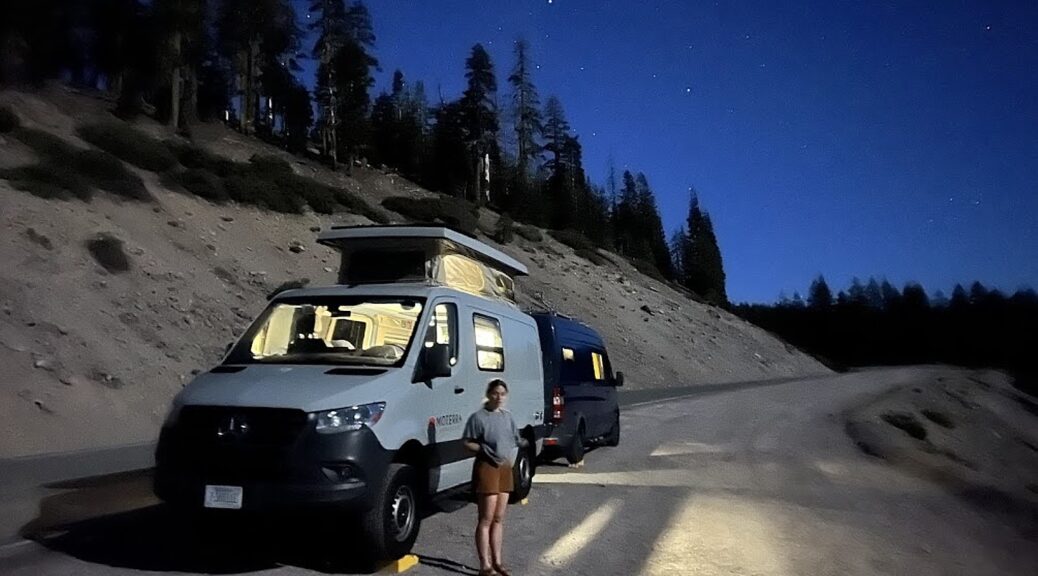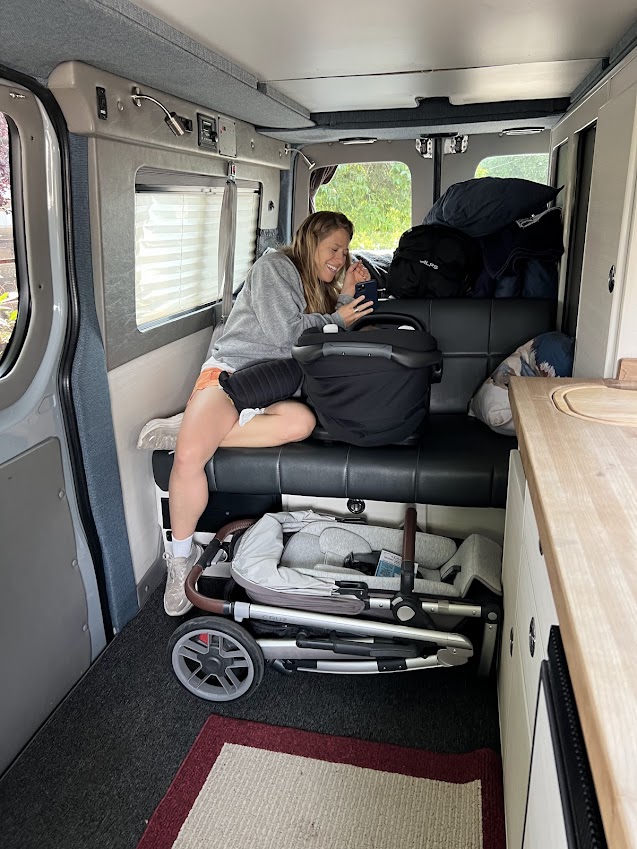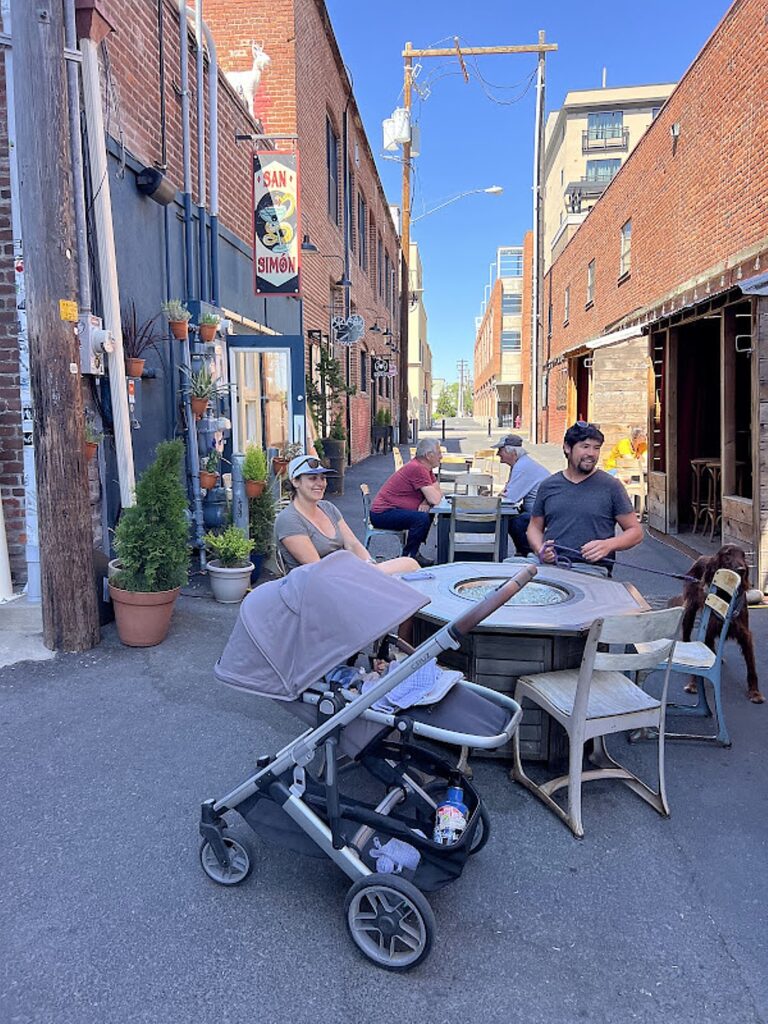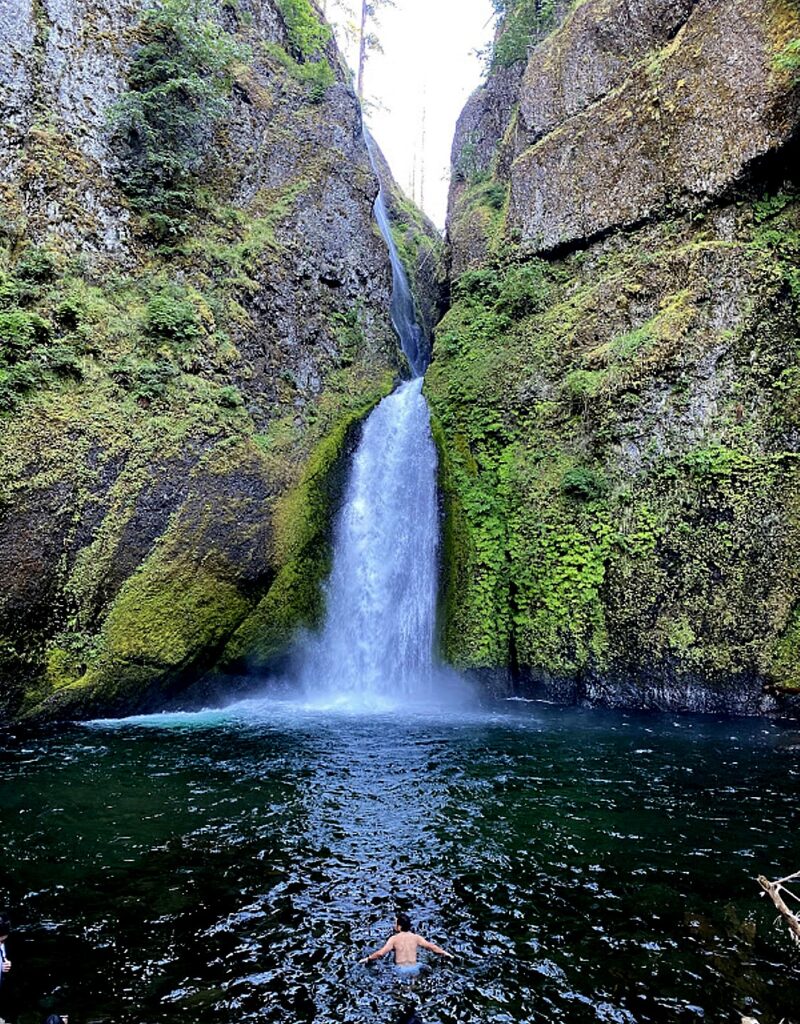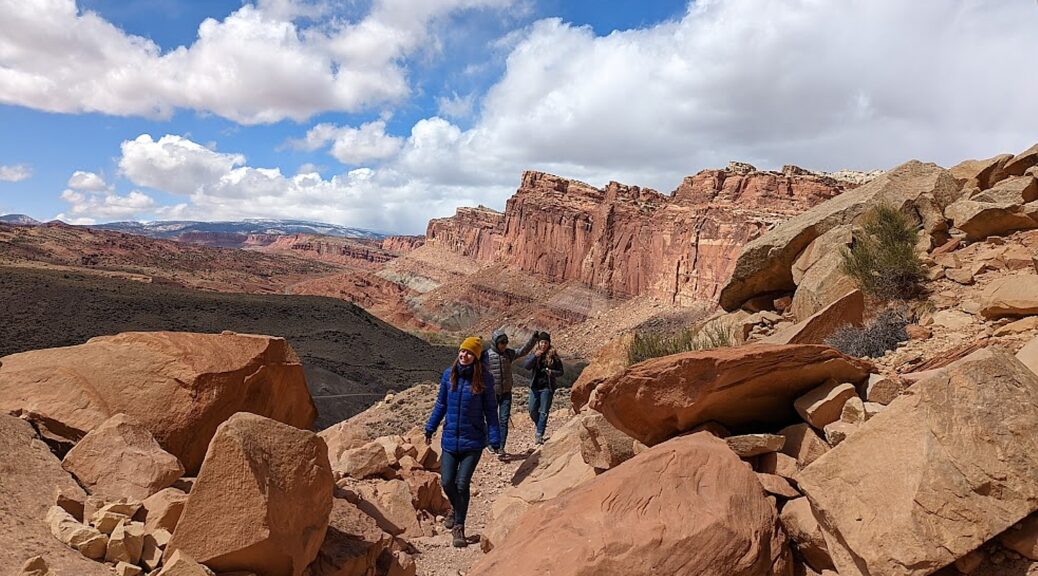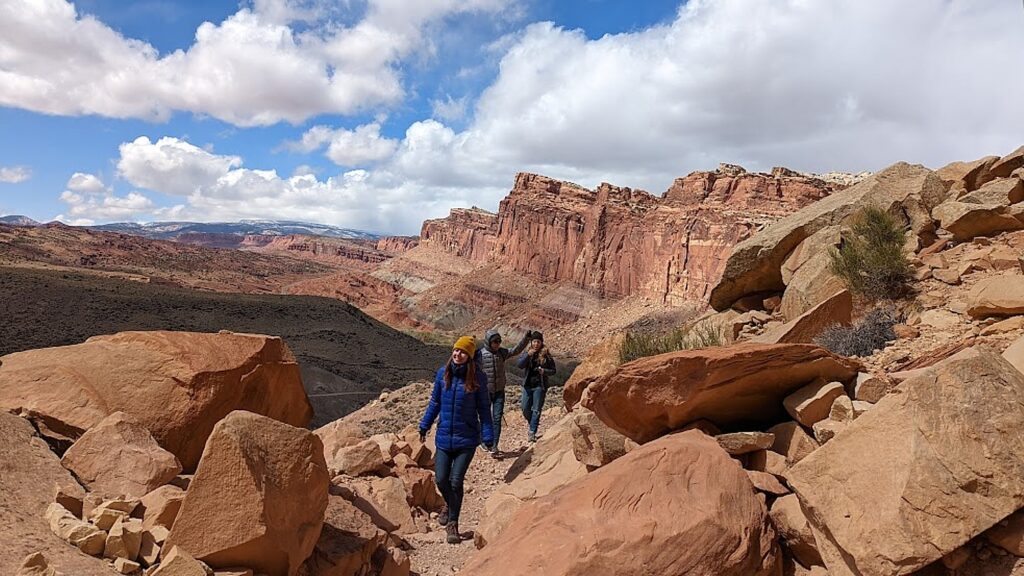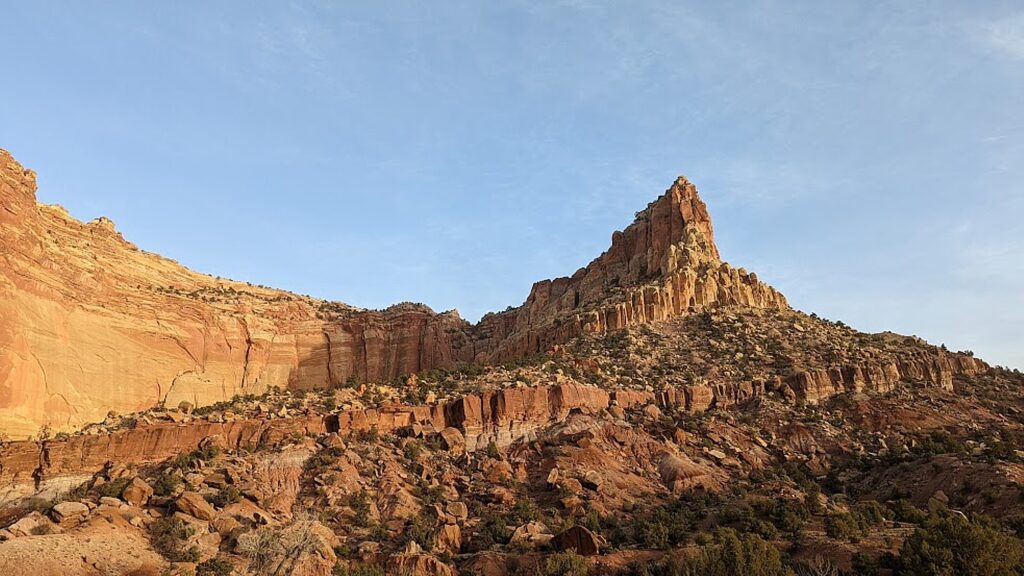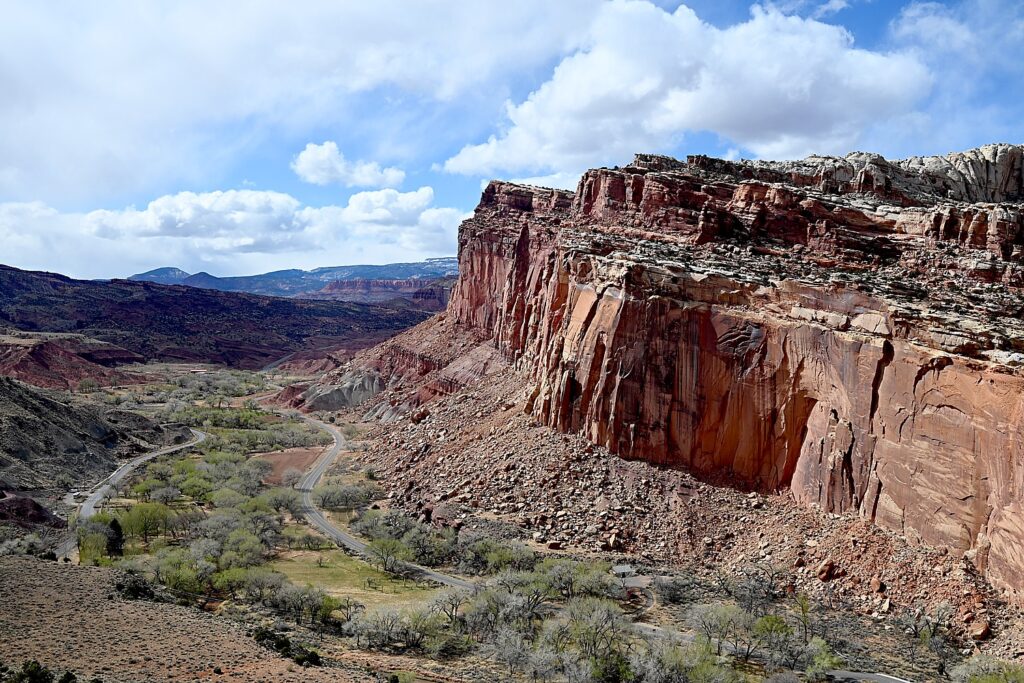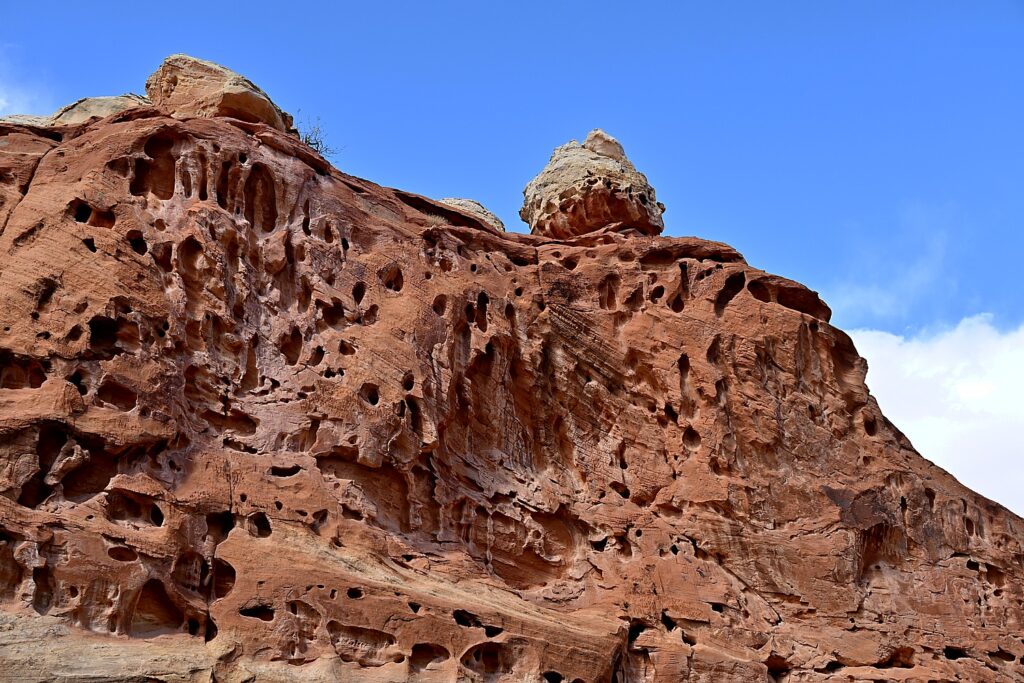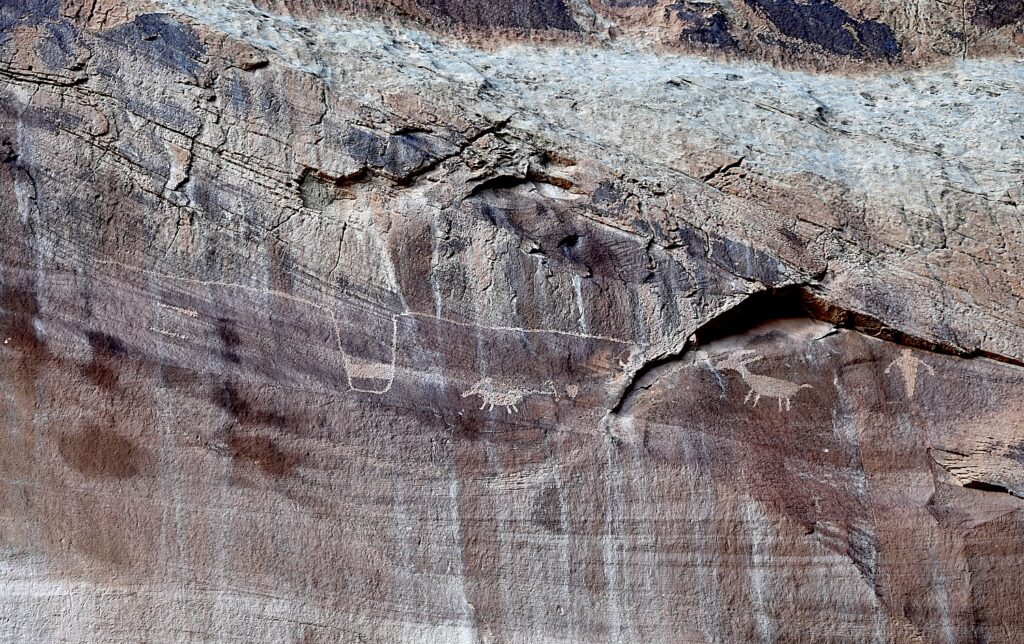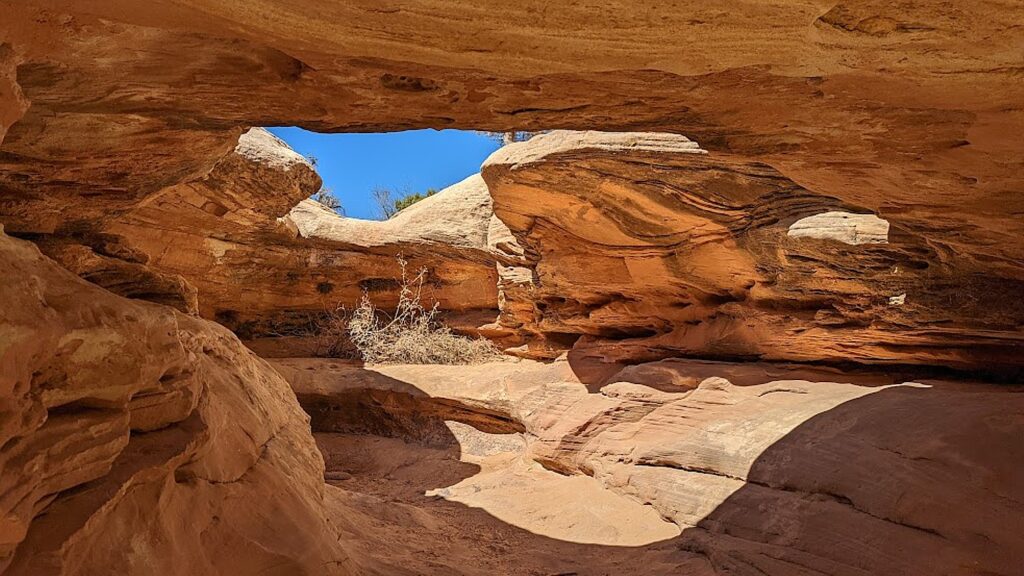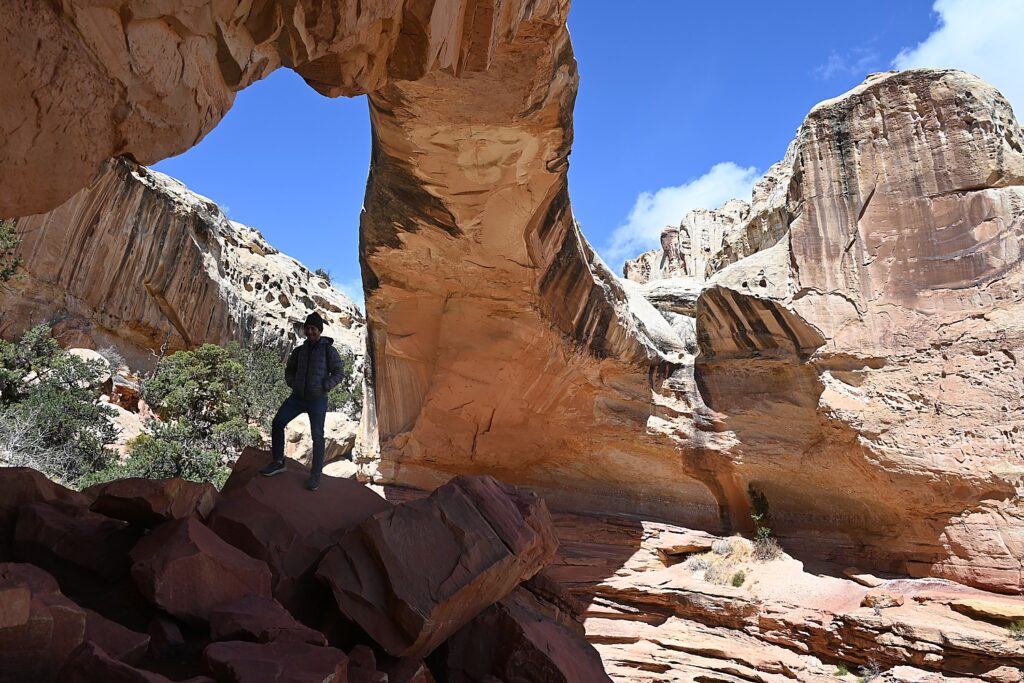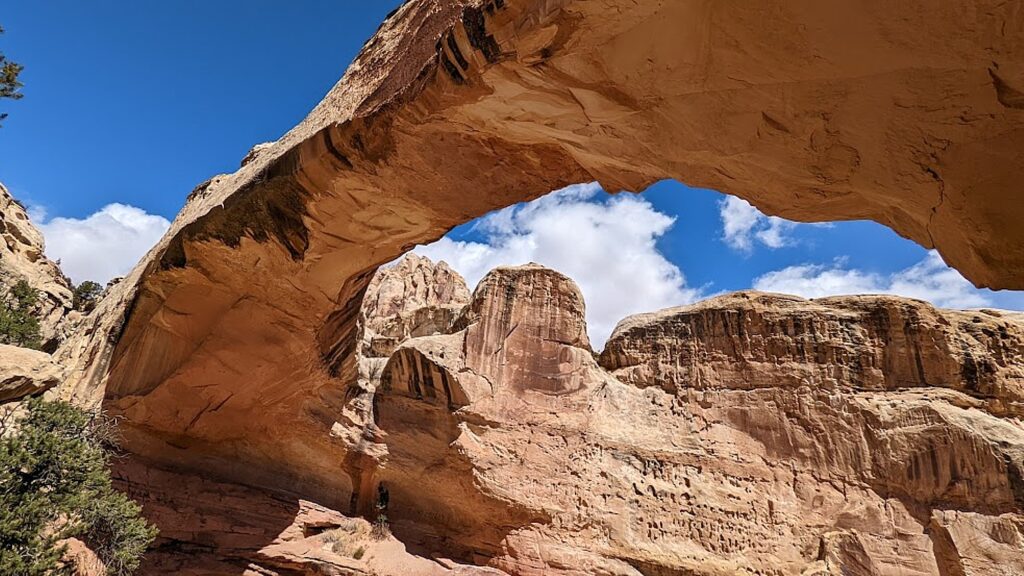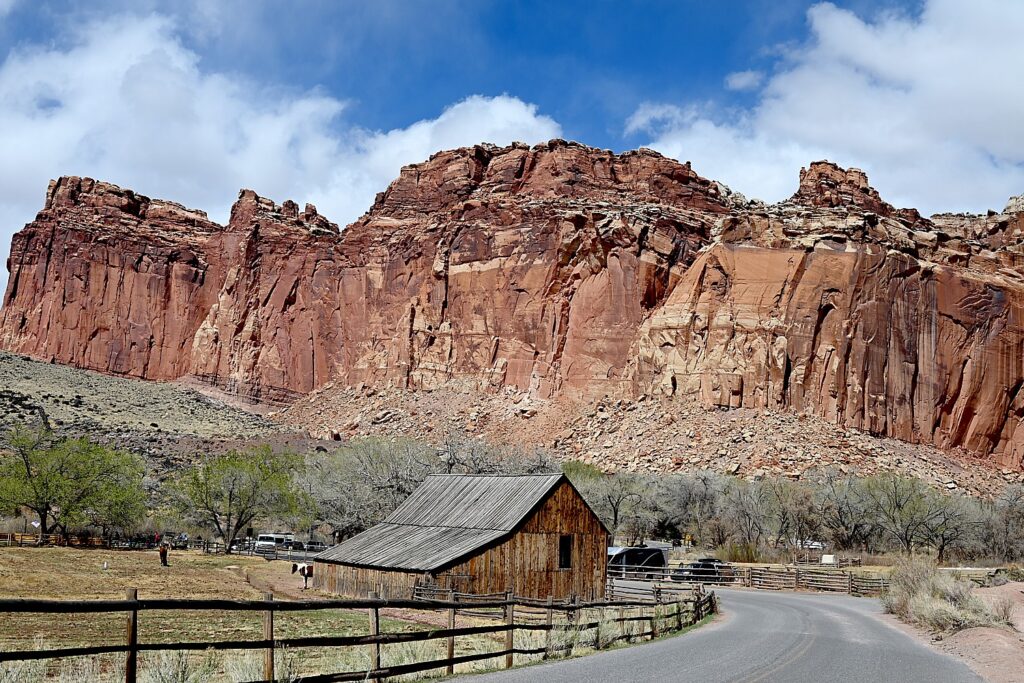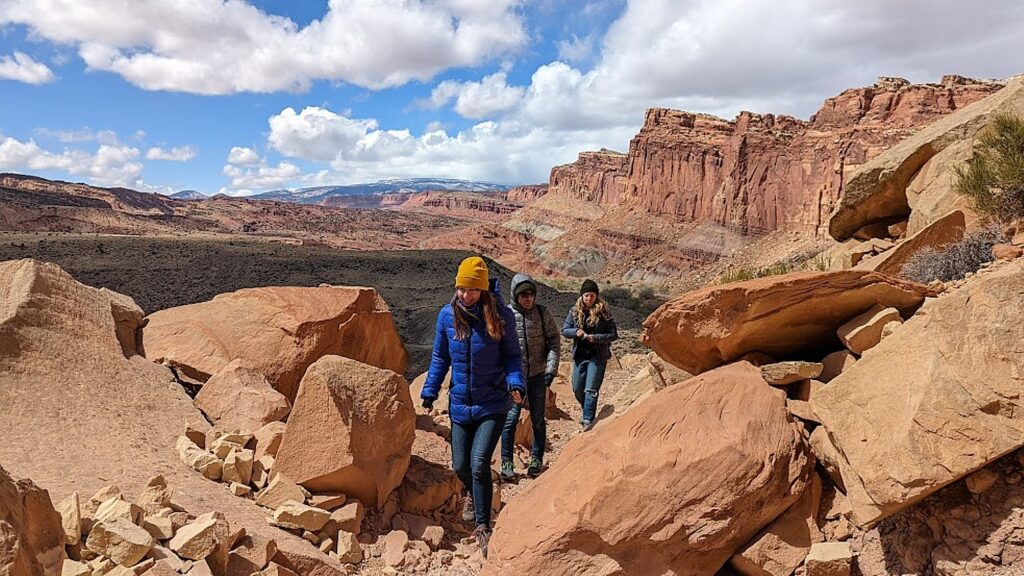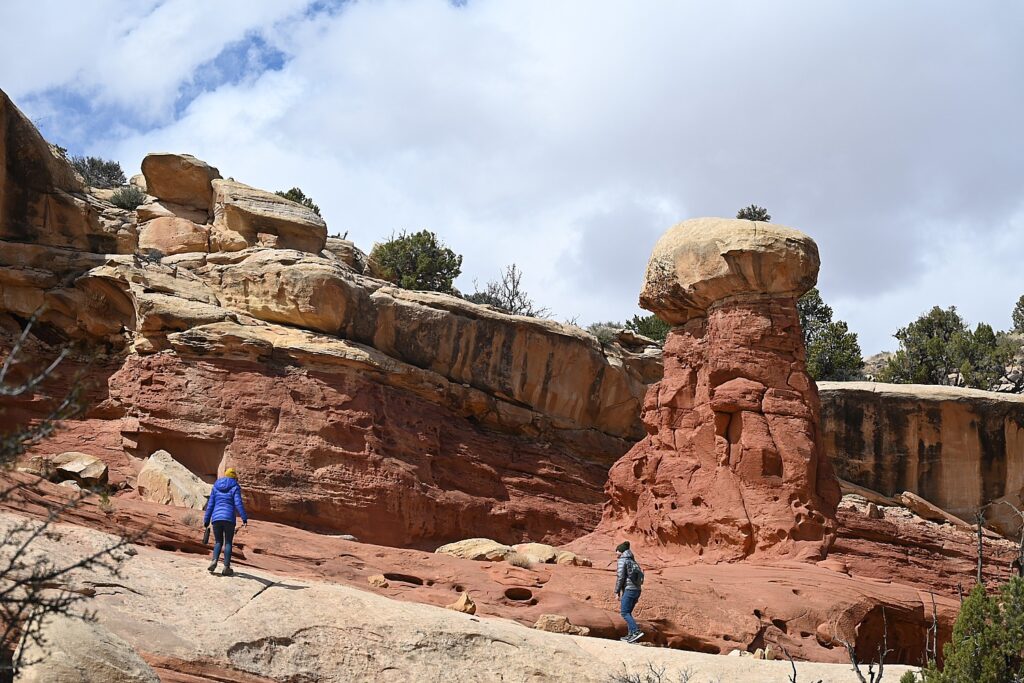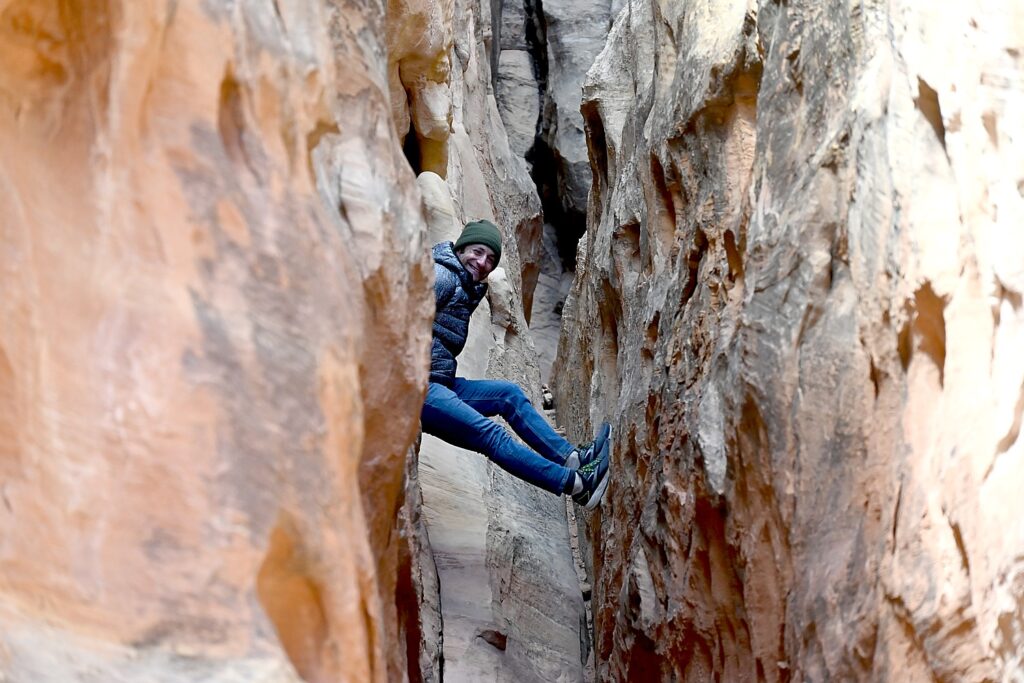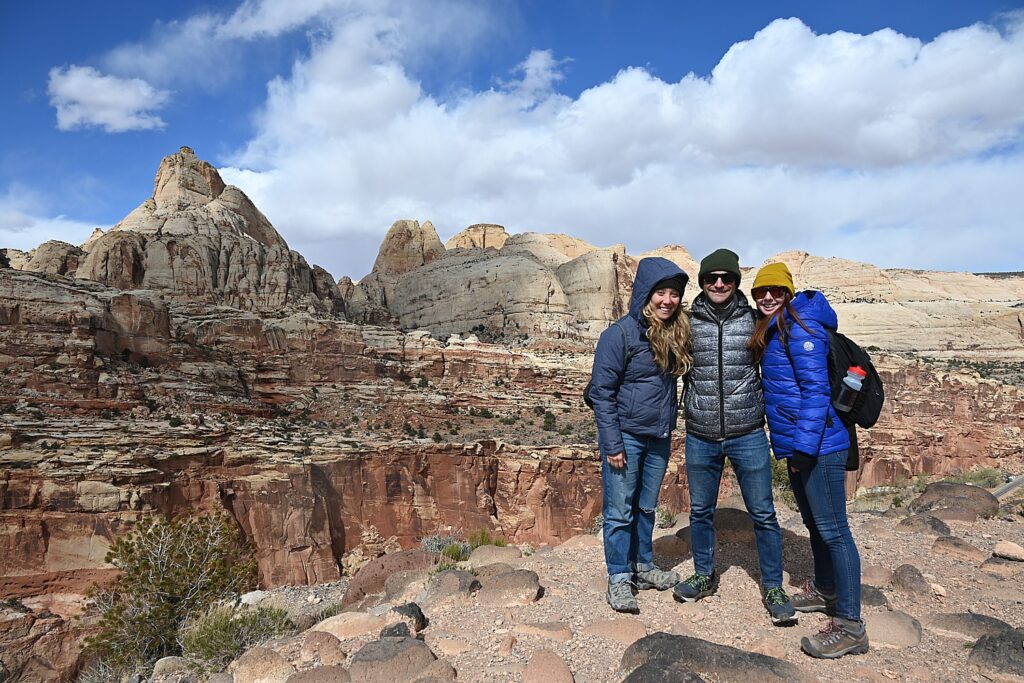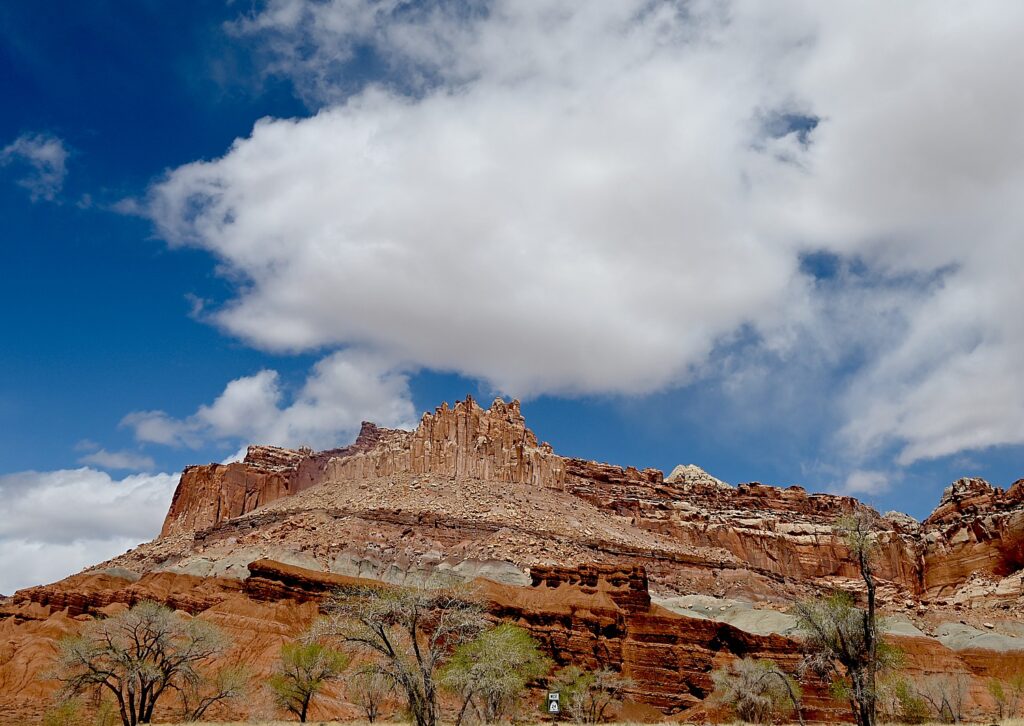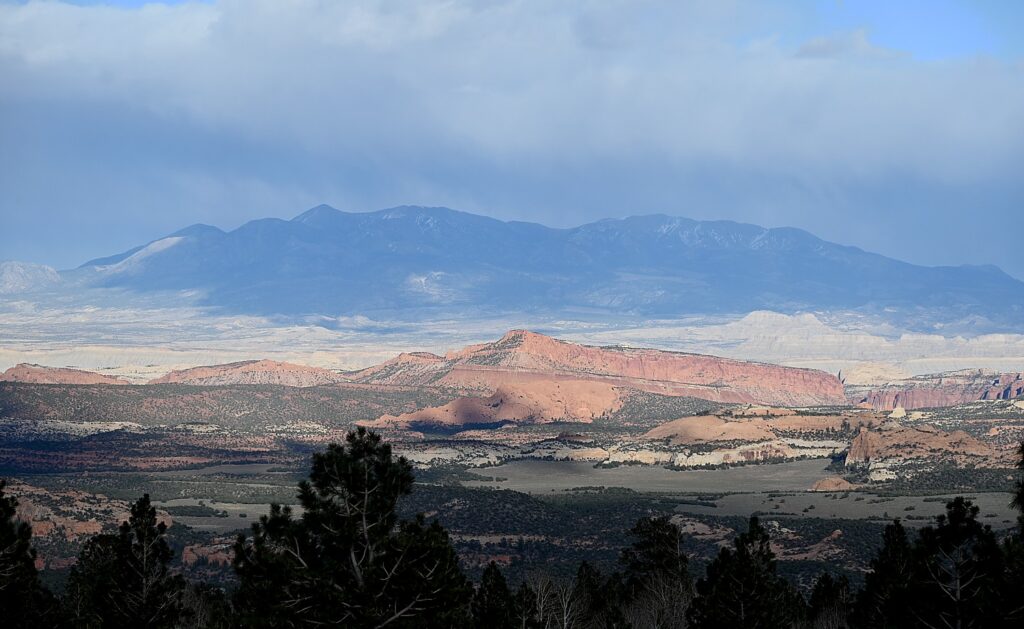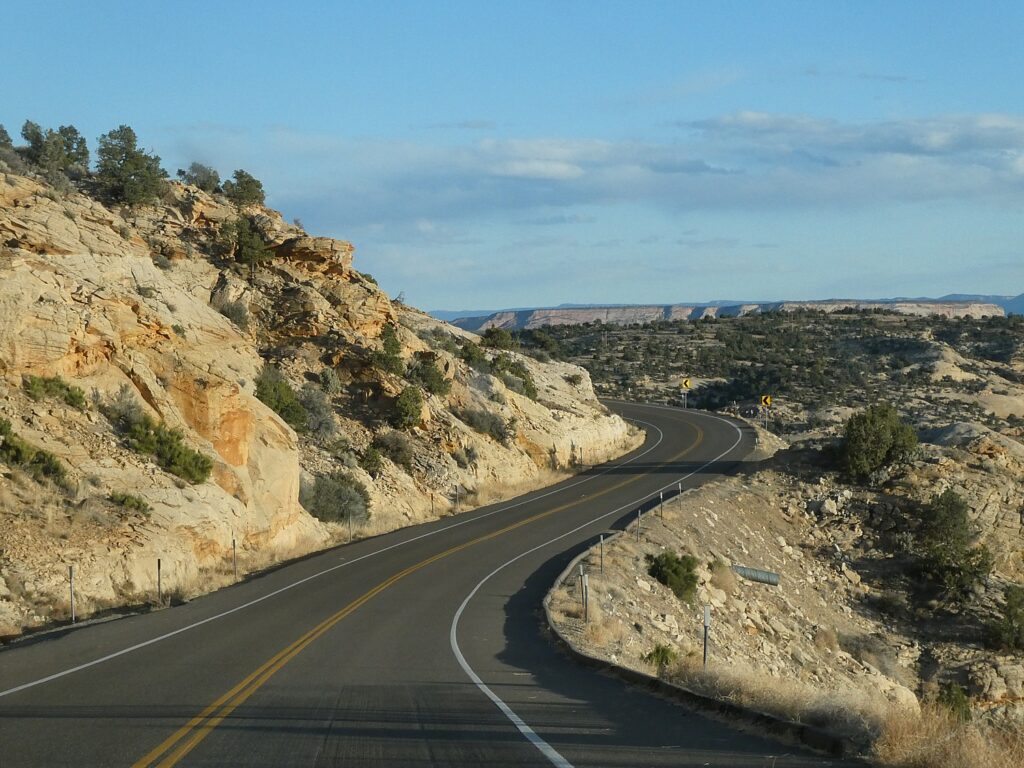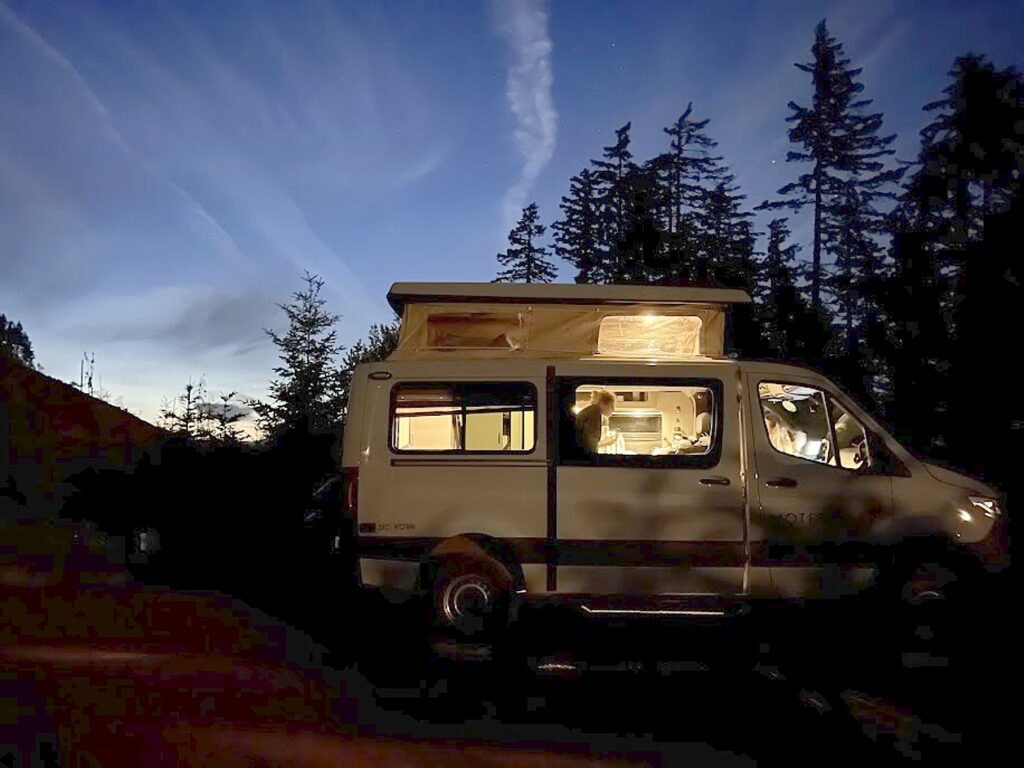
By Sarah Falter and Eric Leiberman, Travel Features Syndicate, goingplacesfarandnear.com
We embarked on our one-way, five-night trip from San Francisco to Seattle in a rented camper van with only vague goals regarding where we’d venture during the day and sleep at night. This is our typical travel mojo but now we had a new accompaniment–our two-month old baby.
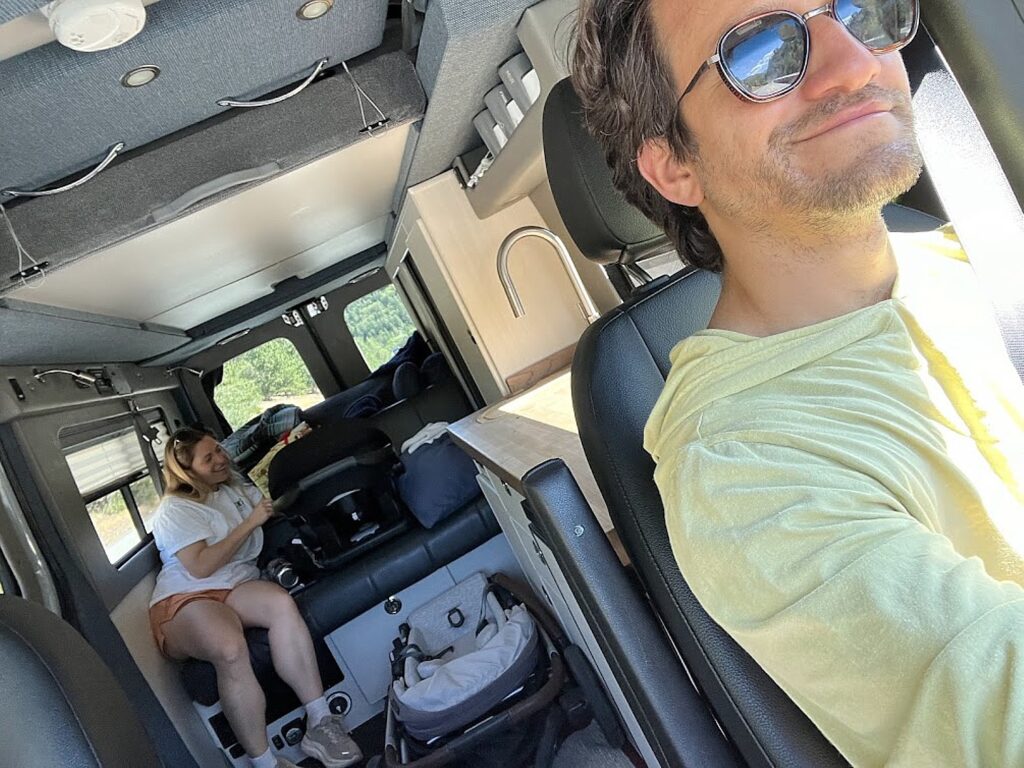
Our van rental was through Moterra Campervans, a company we had used once before to explore California, Nevada, and Utah national parks on a one-week pre-parenthood excursion. We were already familiar with the camper van specs, how comfortable it is to drive, and all of its convenient amenities. The unknown for this trip, of course, was doing it all with an infant. (See: AD-VAN-TURING, NEWEST TRAVEL TREND)
Our friends with kids thought it was an ambitious proposition to go on such an adventurous trip with a newborn, especially as first time parents. But, we were confident in our abilities to navigate whatever may come our way. And, more importantly, we are fortunate to have a very patient and happy baby, who rose to the adVANture challenge, enduring hours-long driving stretches secured in the back seat in his rear-facing car seat (staff will explain how to properly install), and sleeping through the night in his pack ‘n play at the foot of our bed.
A quick note on van tripping with a baby: packing is much easier for road trips vs flights! The Moterra van had plenty of shelving and trunk space for our belongings, and we found we were much more organized using packing cubes to differentiate baby’s day/night clothes (bring 2x what you think you need), accessories, toys. We also packed soap to handwash clothes as needed.
The luxury Mercedes-Benz Sprinter Van we rented from Moterra (gomoterra.com) was the Pop-Top Classic, which sleeps up to four and seats five. The van has solar-powered central heat (perfect for nighttime temperature control for baby), and is outfitted with a fully stocked galley including a mini-refrigerator, camping stove, cooking tools, French press coffee maker, dining ware, cleaning supplies; and household must-haves including a portable table and chairs, portable toilet, outdoor shower, bed linens, towels. If you prefer, you can have Moterra pre-stock the galley with groceries (if you don’t want to stop off at a grocery yourself).
You can also take advantage of their concierge service and pre-planned itineraries, which are all-inclusive packages with a day-by-day personalized itinerary, pre-booked campgrounds, organized activities, and a dedicated Trip Expert (especially helpful if your trip includes national parks, many of which now require reservations and are strict about not allowing wild camping). Moterra also allows for one-way rentals (and pets!). It was also comforting to know that Moterra has a 24-hour helpline had we encountered any difficulty.
A note about driving – if you have never driven a camper van and worry about how it handles, we can testify that these 19-foot long vehicles feel like a typical SUV. They also have added safety features such as blind spot detection/alarm, backup camera, and Apple car play (wireless). In addition, the van is equipped with an inverter so you can charge laptops and devices via its solar battery vs the car battery as needed.
We set out on our trip loosely planning to (wild) camp near Mt. Shasta for our first night (this was strategic that day because temperatures in California were high with fires in the far distances, and the elevation of Mt. Shasta promised cooler temps).
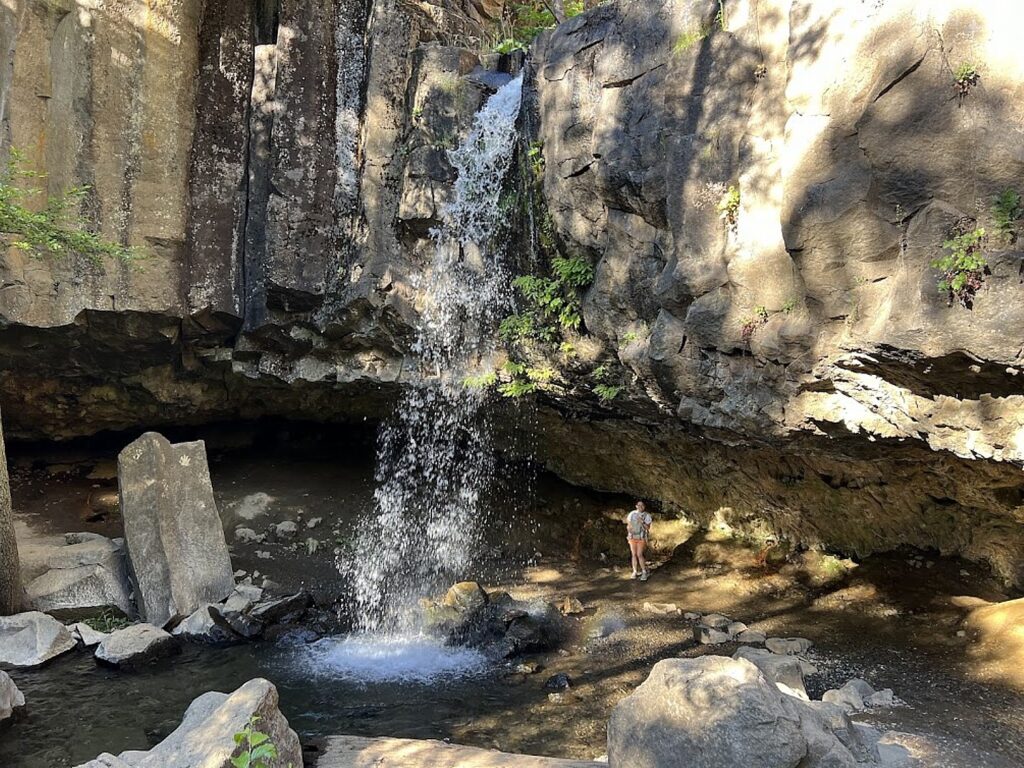
We arrived at Shasta-Trinity National Forest in Northern California, close to the Oregon border, by mid-afternoon day one. We selected Hedge Creek Falls to hike with the baby – a beautiful but short/manageable trail that leads to a small waterfall (a supportive baby carrier is a must– we use the Ergobaby Omni Breeze). We were treated with a mountain ice run-off water fountain at the trailhead, and delightedly filled our water bottles.
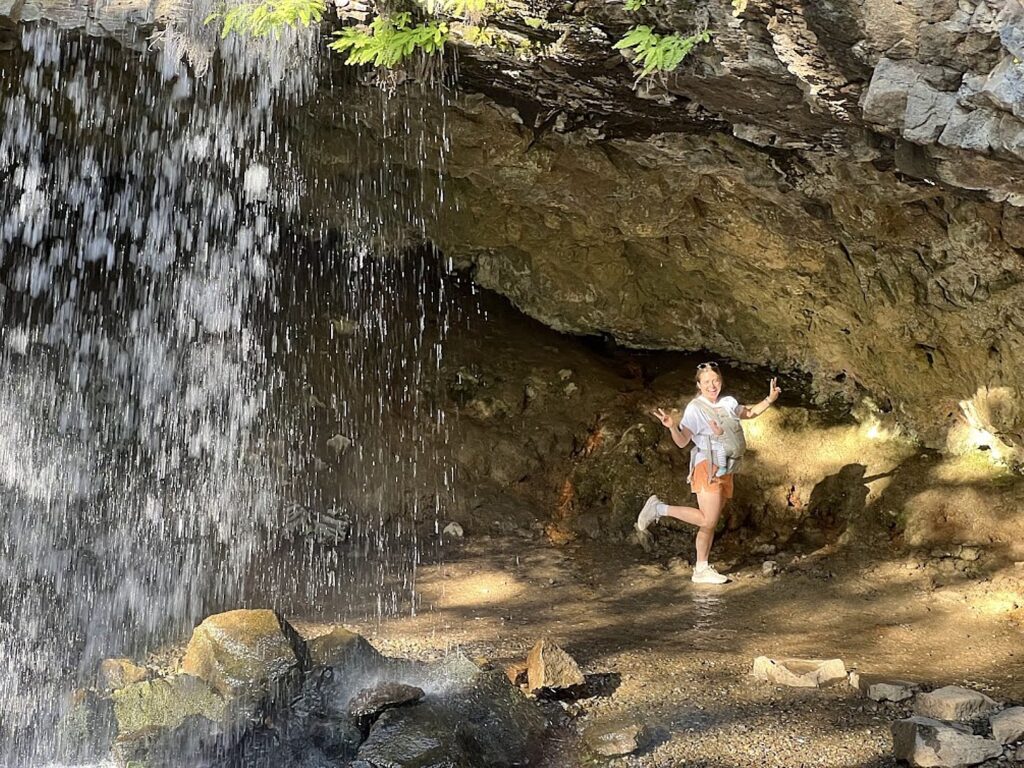
As sunset drew closer we decided to head to the town of Mt. Shasta for a meal (Yaks Shack at 401 N. Mt. Shasta Blvd was solid). Then we joined forces with two friends also camping in the area, and ventured up Everitt Memorial Hwy towards the John Everitt Memorial Vista Point for a place to overnight – a wild-camping location we selected using the I-Overlander app (very helpful for navigating free and legal campsites).
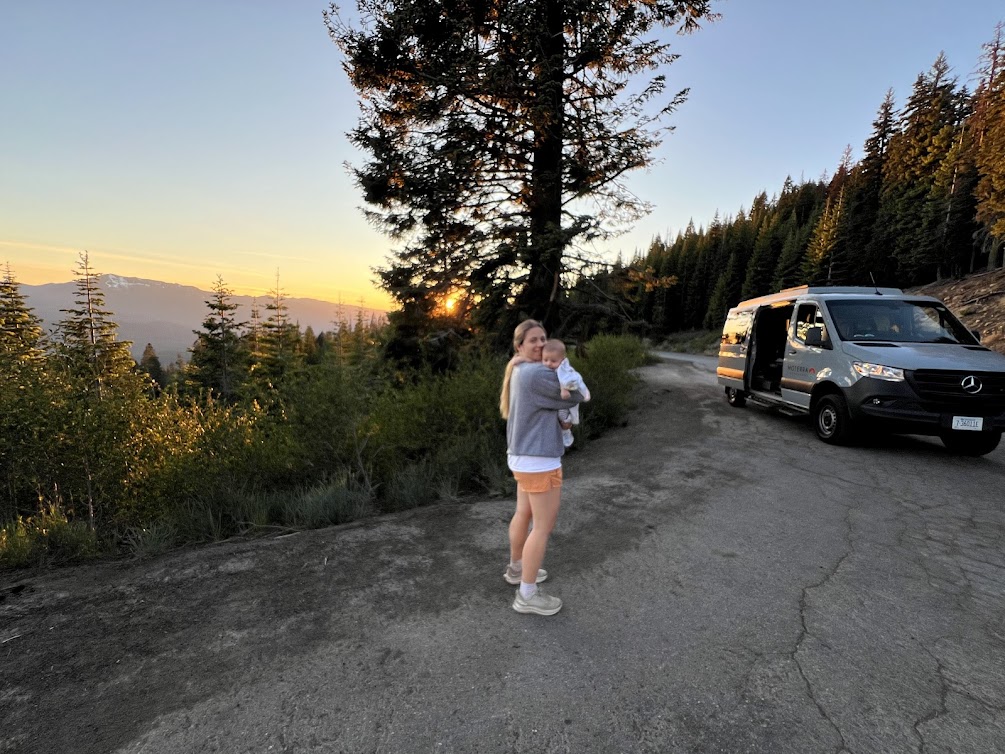
We were forced to drive higher and higher on the winding road, limited by the large space our two vans required. Ultimately, we did find a safe spot with a view of the last rays of sunset, but had we not (in the worst case scenario), we would have pulled into a standard campground nearby for a small $20 fee.
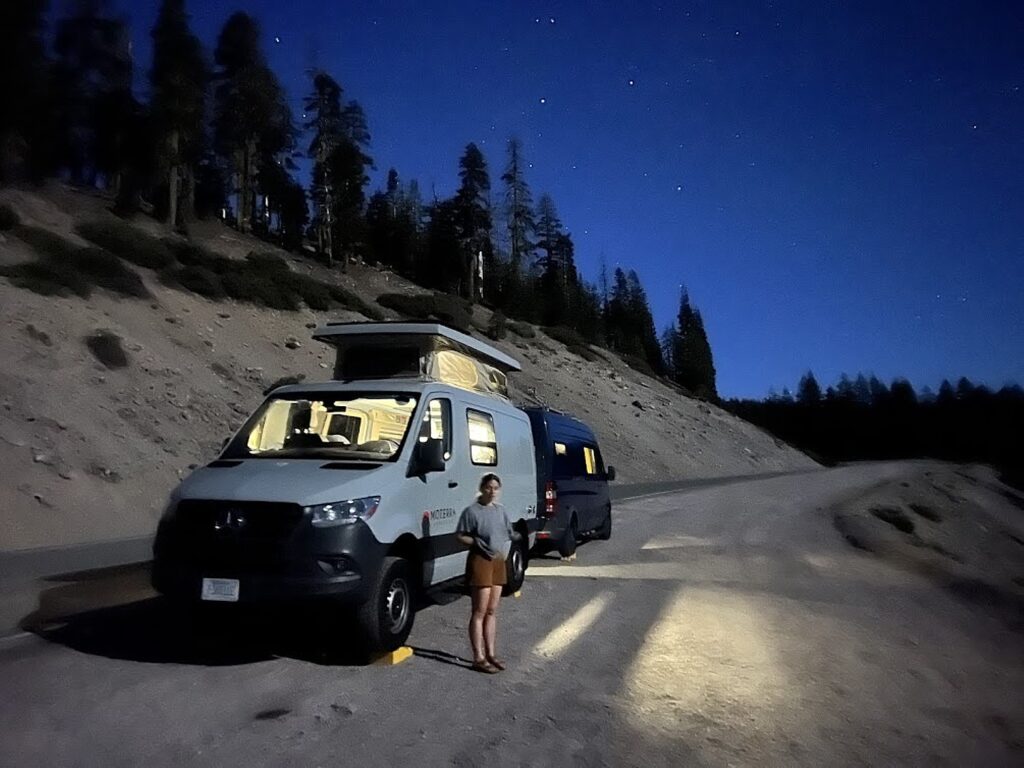
The next morning we used our camping stove to whip up egg burritos and fresh coffee. Then we spent a couple hours exploring Mt. Shasta town–very cute with quaint cafes, juice bars, burger joints and gorgeous views of Mt. Shasta from the main road.

We took a small nature walk nearby at Lake Siskiyou Trail to stretch our legs before our long-ish (4 hour) drive to Bend, Oregon.
Pro tip on road-tripping with a baby: budget at least 50% extra time for your drives, as the baby needs lots of breaks for feeds, diaper changes, cuddles, etc. You can, however, choose really beautiful spots for these tasks and have lots of little snacks while doing it! It almost feels like hanging out on the front porch or backyard of your own home.
Bend, Oregon is an activity-lovers dream. It is known for the gorgeous Deschutes River which runs right through its downtown. The many parks, swimming areas, river hikes, mountain biking trails, and canoeing/kayaking/tubing/paddleboarding spots equate to endless fun. And to top off your day there are many breweries and downright fabulous restaurants to try downtown. We so loved the youthful, active, and family-friendly energy we found there. The town feels like a delightful mix of Austin, Texas and Jackson Hole, Wyoming.
We explored Rimrock Trailhead (18768 State Hwy 372), a beautiful hiking/biking area with many trails, some of which lead right to the Deschutes River (Eric couldn’t resist a mid-hike swim). We didn’t bring our bikes this trip as our baby is much too young to ride along, but if you do decide to bring bikes on your trip, Moterra has optional racks which can be used for bikes, skis, surfboards.
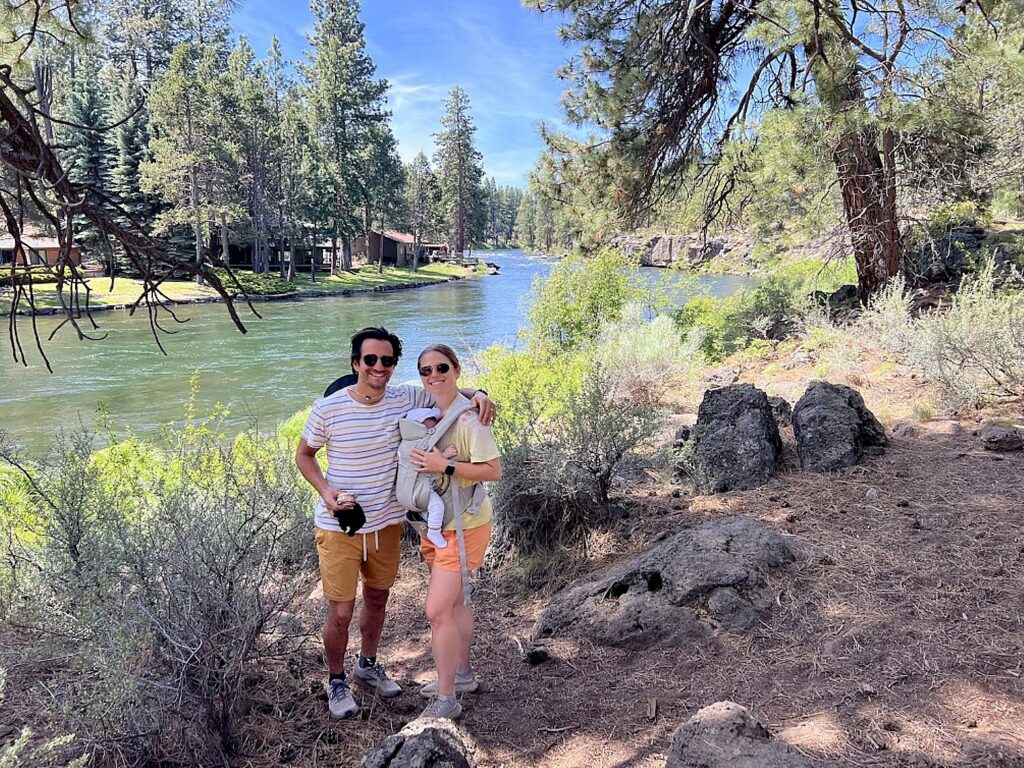
A food highlight in Bend was definitely Wild Rose restaurant (150 NW Oregon Ave.), serving mind blowing Thai food, reasonably priced for the quality and quantity. We also enjoyed Bend Brewing Company (1019 NW Brooks St.) with its many beer offerings plus live music overlooking the river.
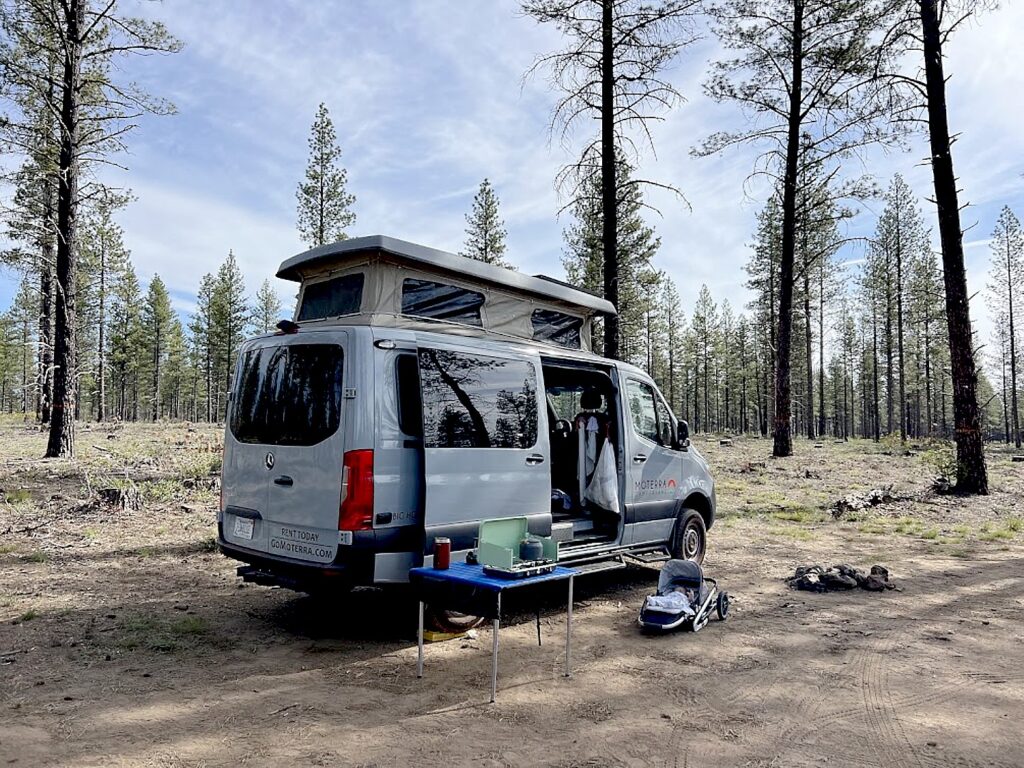
When it was time to sleep, we parked our van at a free campsite just outside of town near Phil’s Trailhead. Our son loved being outside until bedtime, so we’d bop him around and take in the sunset views before setting up his pack ‘n play and zipping him up in his sleep sack.
After two lovely days in Bend we buckled up and drove north to Hood River, Oregon (an hour east of Portland). We grabbed sandwiches at Golden Goods Sandwich and Bake Shop (111 Oak St.) and headed to the gorgeous Wahclella Falls Trail (approximately 2 mile hike) where Eric (for whom there is no water feature he doesn’t take advantage of) swam at the mouth of the (very cold) waterfall. Sarah’s sister, Hannah, joined for this leg of the trip (the van comfortably fit 3 adults and one baby).
Night began to fall so we hopped in our van in search of a comfy site. We ultimately found a wild camping spot on Riordan Hill Drive on the Hood River. We whipped out our camping stove and made ourselves pasta with spinach and sausage. Its always extra satisfying to eat a hearty meal in such a remote location. The wind was pretty intense up on Riordan Hill Drive but we all made it safely through the night, and baby slept right through the natural white noise.

In the morning we hiked around the area a bit and then headed to Hood River town. A cute area with loads of restaurants and shops, and the added bonus of the Hood River Waterfront Park (650 Portway Ave.), a popular place for kitesurfing and windsurfing, which are super fun to watch.
Hood River is popular and we were there on a beautiful Friday, so it was crowded. We realized how much we appreciated another feature of the Moterra camper van – its size. While it is often hard to find parking for a big RV especially in urban places, the Moterra is not much bigger than an SUV and fits in regular parking spots. The nearby convenience of the van wherever we went was also such a great asset when traveling with a baby–we were never out of diapering supplies or outfit changes after blow-outs.
While every child is different, we felt one of the reasons our baby did so well on this trip was because he had constant enriching stimulation and fresh air. He really loved the natural entertainment of it all, and slept better than ever at night because of it (we think).
We rounded out our trip with dinner in Portland (Bluto’s restaurant is worth a visit), and camping close to downtown Seattle at Seward Park.
The camper van experience is wonderful, and if you factor in not having to pay for flights, hotels, or cabs, plus the convenience, amenities, and the unique and memorable experience, it is a value proposition. All in all the Moterra experience works out to about $350/night, but varies with season. You will also pay for gas, insurance, and a cleaning fee.
We returned the van to Moterra’s conveniently located warehouse near Seattle Airport (they have other locations near airports in Salt Lake City, Las Vegas, San Francisco, Jackson Hole, Whitefish, Montana, and have a new hub in Portland, Maine, for adventures in Northern New England and Eastern Canada). We did a one-way trip in order to spend quality (baby) time with family in the Seattle area and flew home via Southwest (thanks to their generous checked-bag policy) the following week (baby’s first airplane flight!).
Moterra campervans are available in three custom Sprinter diesel models: the Pop-Top Classic sleeps 4 and seats 5 and is best for those who want maximum floor space and storage; the Pop-Top Plus sleeps 4 and seats 8, and is best for larger groups; the High Roof sleeps 2 and seats 6, and is best for couples who want the luxury of an indoor shower. The 4-wheel-drive campervans are 19 feet in length, making them both easy to maneuver and off-road capable. All Moterra Campervans feature a full kitchen (stove, sink and fridge), porta-potty toilet, thermostat heater and solar electric system and water supply. The campervan rentals are also pet friendly.
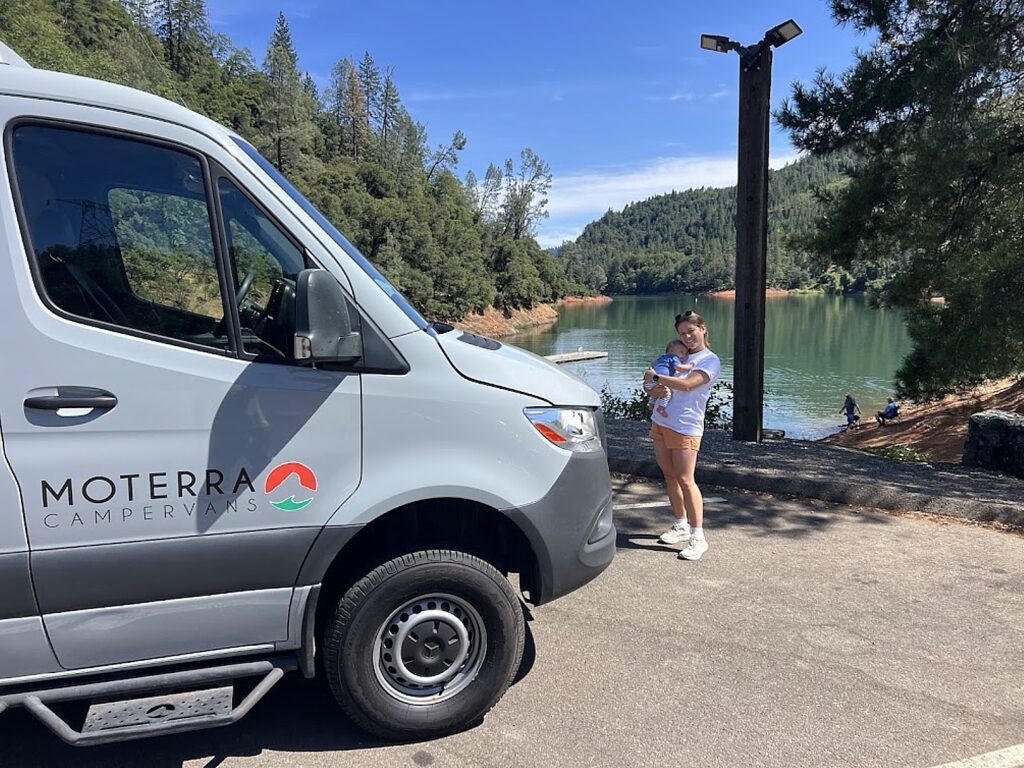
Co-Founders Gabe Aufderheide, Trevor James and Kevin Deneen bring skills and experience including 20-plus years designing high-end outdoor adventures and venture capital:
Kevin Deneen, Co-Founder, CEO, spent a decade in venture capital supporting startups innovating to make the energy and industrial ecosystems more sustainable. Most recently, he was part of the founding investment team at SE Ventures.
Trevor Jame, Co-Founder, COO,criss-crossed the globe for a decade, developing and guiding custom vacations for discerning clients. Through his work with one of the world’s top active travel companies, he developed a deep and abiding passion for connecting people with new destinations, cultures and encounters.
Gabe Aufderheide,Co-Founder, CRO, has over 10 years of experience guiding, designing, and customizing specialty travel across the globe.
Moterra CamperVans, 1565 W. Berger Ln., Jackson, Wyoming, 307-200-7220, email info@gomoterra.com, gomoterra.com
_______________________
© 2024 Travel Features Syndicate, a division of Workstyles, Inc. All rights reserved. Visit goingplacesfarandnear.com and travelwritersmagazine.com/TravelFeaturesSyndicate/. Blogging at goingplacesnearandfar.wordpress.com and moralcompasstravel.info. Visit instagram.com/going_places_far_and_near and instagram.com/bigbackpacktraveler/ Send comments or questions to FamTravLtr@aol.com. Tweet @TravelFeatures. ‘Like’ us at facebook.com/NewsPhotoFeatures
